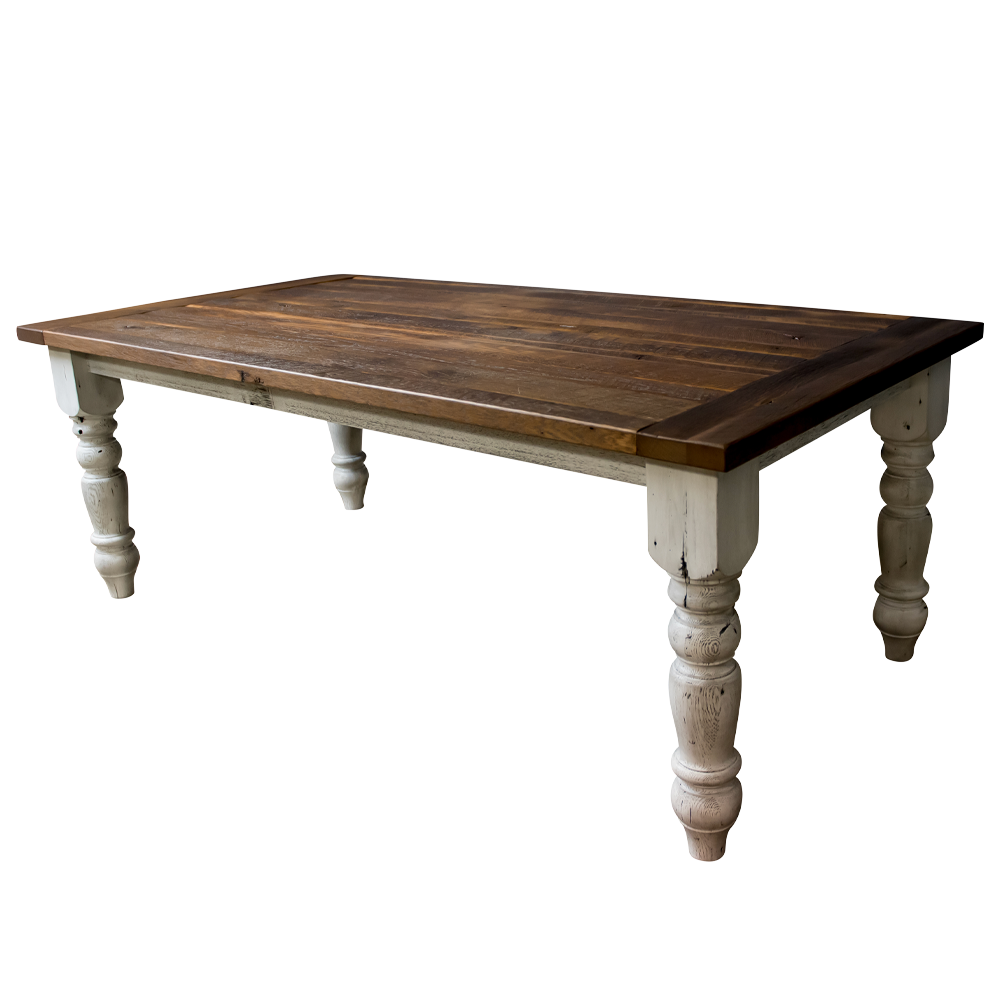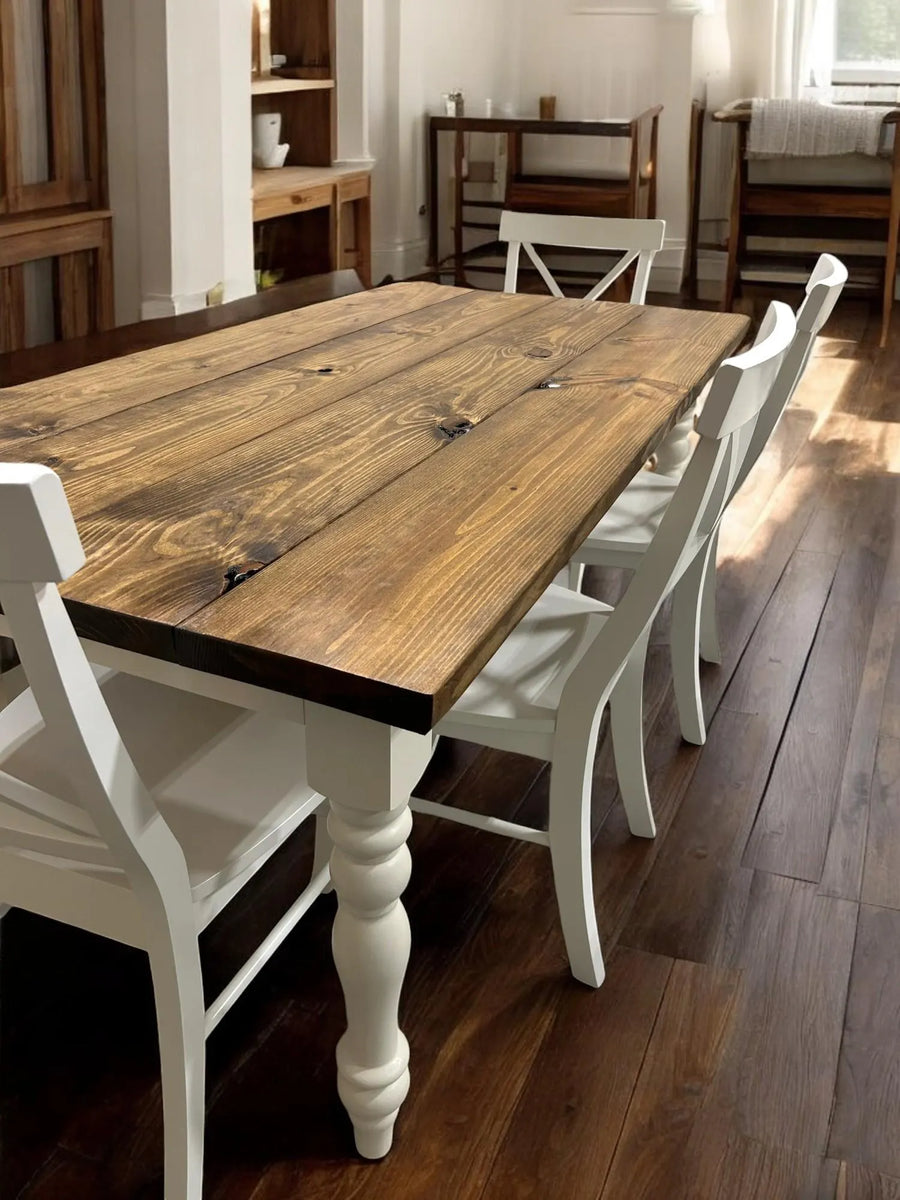Update Your Table's Look with Attractive Dining Table Legs Wood Styles
Update Your Table's Look with Attractive Dining Table Legs Wood Styles
Blog Article
Discovering the Different Kinds of Table Legs Wood for Your Dining Area
The selection of eating table legs wood can exceptionally affect both the aesthetic and useful high qualities of your dining space. Strong timber choices, such as oak and walnut, give a timeless look with unmatched sturdiness, while engineered wood options offer cutting-edge designs that mimic the richness of natural grains.
Strong Timber Options

Furthermore, solid timber is renowned for its stamina and longevity. Unlike engineered products, solid wood is much less prone to warping and damages with time when effectively maintained. This makes it an optimal selection for households or those that frequently hold events. Each piece of strong wood is distinct, showcasing specific qualities that contribute to the charm and character of the table.
In addition, solid wood can be completed in countless ways, ranging from all-natural oils to discolored surfaces, enabling home owners to customize their furnishings to match their decor. In recap, choosing solid wood for eating table legs not just ensures structural stability yet likewise improves the visual appeal of the eating area, making it a beneficial investment for any home.
Engineered Wood Alternatives

Plywood, built from several layers of wood veneer, is particularly solid and secure, making it an excellent selection for eating table legs. Its split structure allows it to stand up to adjustments in humidity and temperature far better than typical strong timber. MDF, on the other hand, supplies a smooth surface area for painting or veneering, enabling developers to attain a sleek appearance while maintaining architectural integrity.
When choosing crafted timber choices, it is essential to think about the intended use and wanted aesthetic. These materials not just boost the performance of eating rooms yet additionally allow for greater design versatility, guaranteeing that modern and conventional styles can exist side-by-side sympathetically.
Reclaimed Timber Includes
Recovered timber supplies a special mix of sustainability and character, making it an increasingly preferred option for eating table legs. Sourced from old barns, factories, and other structures, recovered timber embodies a background that new materials merely can not reproduce. Each piece carries its own tale, noted by distinctive flaws, knots, and varying grain patterns, which add to a table's unique aesthetic allure.
Along with its aesthetic beauty, reclaimed wood is an eco-friendly choice. By repurposing previously used products, it minimizes the demand for brand-new lumber, therefore aiding to save forests and lessen waste. This aligns with an expanding customer preference for sustainable methods in furniture.
Additionally, recovered timber is usually more long lasting than newly harvested wood due to its age. The all-natural drying process that recovered timber goes through lead to a denser and stronger product, making it much less vulnerable to bending and splitting. This improves the long life of eating tables, allowing them to hold up against the rigors of daily use.
Softwood vs. Wood
When picking eating table legs, recognizing the differences in between softwood and wood is vital for achieving both visual and practical goals. Softwoods, originated from coniferous trees, such as want and cedar, are characterized by their lighter weight and convenience of manipulation. They generally show an even more rustic look, making them appropriate for casual or country-style dining spaces. However, softwoods are usually less sturdy than woods, which can be a factor to consider for family members or those looking for long life in their furnishings.
On the other hand, woods, sourced from deciduous trees like cherry, oak, and maple, are renowned for their thickness, toughness, and sturdiness. The complex grain patterns and abundant hues of woods give a sophisticated and timeless allure, making them read this post here suitable for official eating setups. While hardwoods tend to be much more pricey and much heavier, their resilience against wear and tear typically justifies the financial investment.
Inevitably, the choice between softwood and wood for eating table legs need to line up with your design vision, use requirements, and budget, ensuring that your eating room shows your individual design while continuing to be useful in time.

Therapies and surfaces
The visual allure and long life of dining table legs can be substantially boosted through numerous finishes and treatments. These processes not only safeguard the wood from damages yet likewise boost its appearance, permitting it to complement varied interior styles.
One typical therapy is tarnishing, which permeates the wood and improves its natural grain while review including shade. Stains provide a rich, elegant appearance, making it possible for house owners to match their furniture with existing style. Alternatively, clear finishes such as polyurethane or varnish produce a safety layer without altering the wood's initial tone, making certain resilience against deterioration.
Furthermore, all-natural oils, like tung or linseed oil, nurture the timber and supply a subtle luster, all while being green. These oils allow the surface area to take a breath, protecting against dampness buildup and prospective warping.
For those seeking a rustic appeal, distressed or weather-beaten coatings can be used to produce an aged appearance, adding personality to the item. Ultimately, the his explanation selection of treatments and surfaces depends upon individual preference, preferred aesthetics, and the particular wood type, making it necessary to think about these factors when choosing dining table legs for your area.
Final Thought
Strong timbers, crafted alternatives, and recovered options each offer unique advantages, catering to numerous preferences and needs. Eventually, the selection of timber type must line up with desired design, sturdiness, and environmental factors to consider, enhancing the total eating experience.
The option of dining table legs wood can profoundly influence both the visual and useful top qualities of your eating area - Dining Table Legs Wood. Strong wood options, such as oak and walnut, supply a classic look with unrivaled toughness, while engineered timber options offer innovative designs that imitate the richness of natural grains. Solid timber uses a classic quality that can boost the general layout of an eating area. Each piece of strong wood is distinct, showcasing specific characteristics that include to the beauty and character of the eating table
Moreover, recovered timber is commonly extra sturdy than freshly gathered timber due to its age.
Report this page